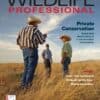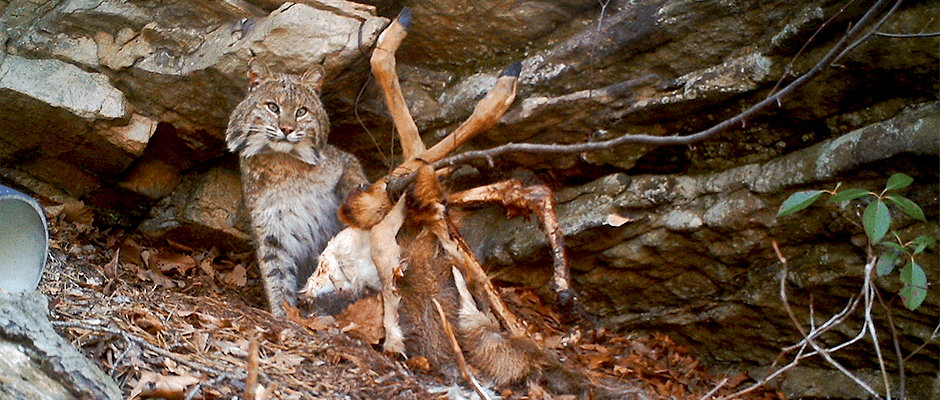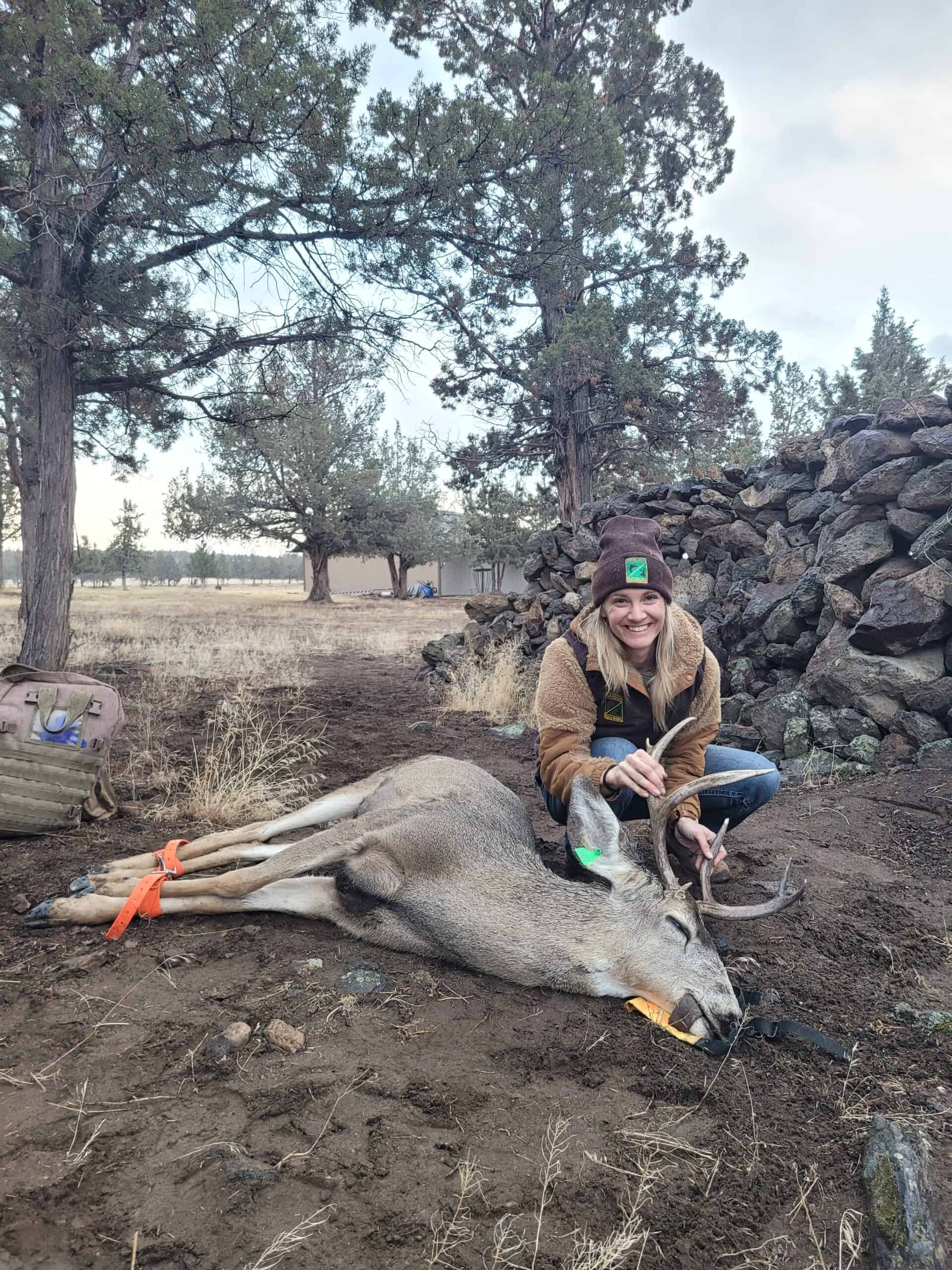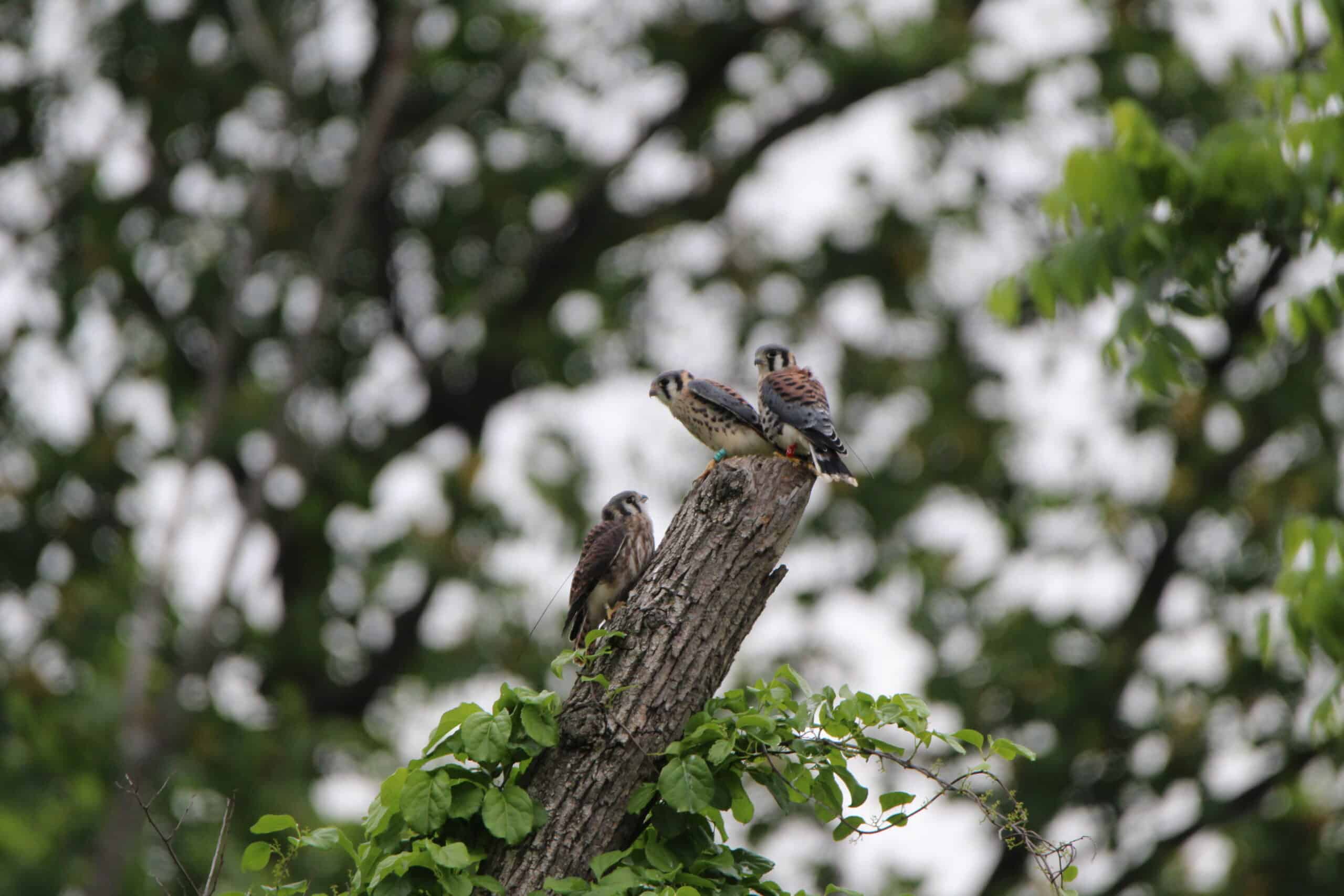Share this article
Citizen Scientists Build Online Mammal Atlas in Pennsylvania
What kinds of mammals live in your backyard?
If you’re in Pennsylvania, a new website powered by citizen scientists’ photos may be able to tell you.
“The general public can go and look to see what might be in their county,” said Lindsey Heffernan, coordinator of the website, the Pennsylvania Mammal Atlas, for the Pennsylvania Game Commission (PGC).
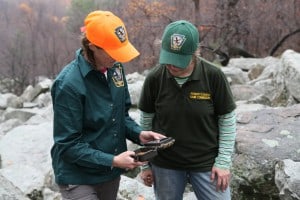
Biologists Lindsey Heffernan and Julie Mibroda bait a live-capture Sherman trap as part of their multi-technique trapping effort. Image Credit: Hal Korber/PGC Photo
Here’s how it works: You sign up on the website using your email address. Once you have taken a photo of a mammal, or otherwise observed one, you upload it and give data based on species, what county and what date you took the picture, as well as any more specific data such as exact coordinates, the township where you saw it or information on age and sex of the animal.
At this point a biologist with the PGC will verify the information and, if approved, the photo and information will appear on the website.
The site can be divided in a number of different ways —by county, species or a combination of both. The date and name of the volunteer who took the photos are also displayed on the website.
The project has only been online about a month but Heffernan says that they have already had around 300 volunteers sign up, submitting around 400 observations that state biologists have approved.
“It’s great to see what the public is out there seeing,” Heffernan says. Some are more noteworthy than others such as volunteer-submitted photos of river otters (Lontra canadensis), fishers (Martes pennanti) and bears with radio-collars.
One particularly surprising observation came when a hunter saw an eastern spotted skunk (Spilogale putorius) — a rare sighting of an animal thought to be extirpated in Pennsylvania. In cases like these, Heffernan said there was follow up, with biologists going into the area in an attempt to verify the sighting. While it has yet to be confirmed — in this case the hunter couldn’t get a photo of the animal — Heffernan hopes biologists will now be able to confirm the presence of a spotted skunk through trail cameras.
“It was a surprise and it was a great example of how the citizen science website can really help us,” she said.
All of this information will be useful in determining the range and distribution of some mammals, particularly the small ones, for which little is known.
“Our agency is responsible for all mammals,” she said. “Some of these smaller nongame species, there’s not much we know about them.”
Header Image:
A bobcat visits a deer carcass placed in front of a trail camera. Hair snares can also be seen in this picture, however they target mammals smaller-sized than a bobcat.
Image Credit: PGC Photo

